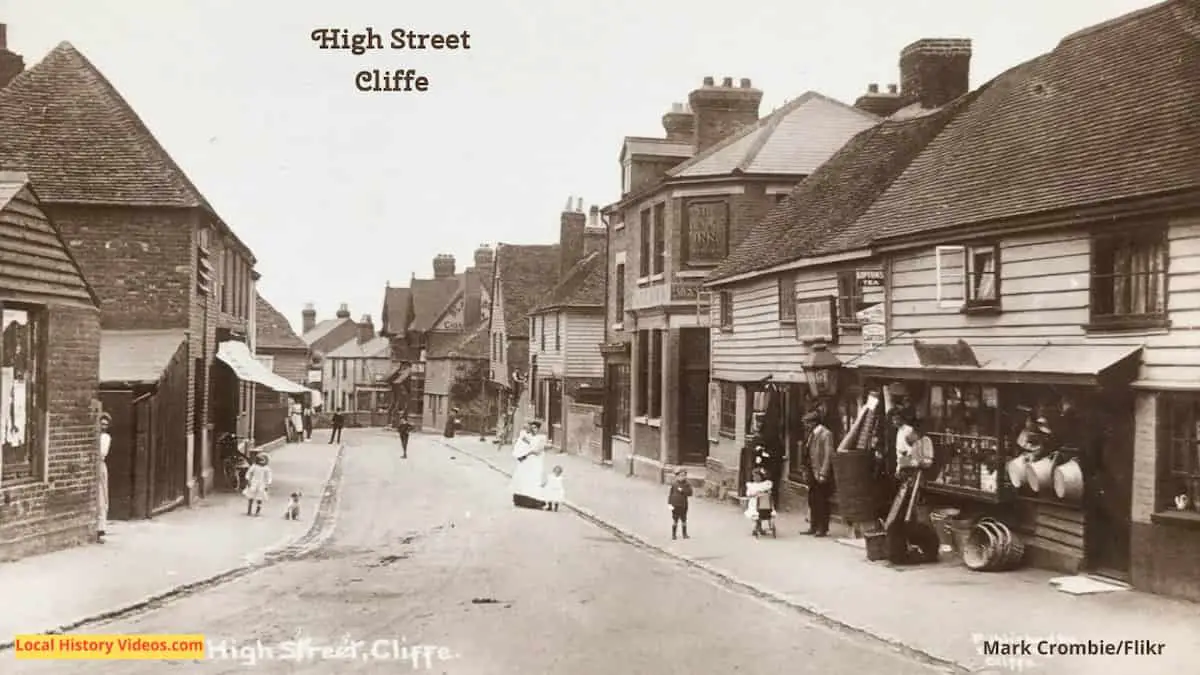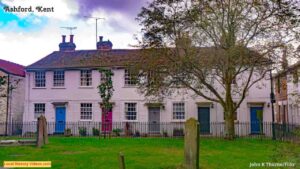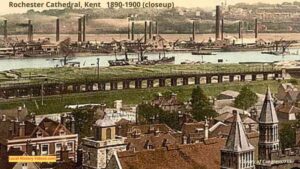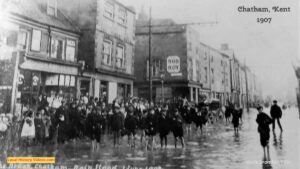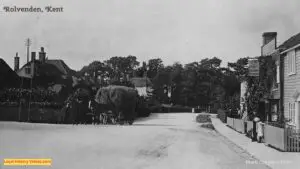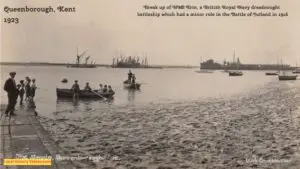Glimpse history through old images of Cliffe, on the Hoo Peninsula of Kent.
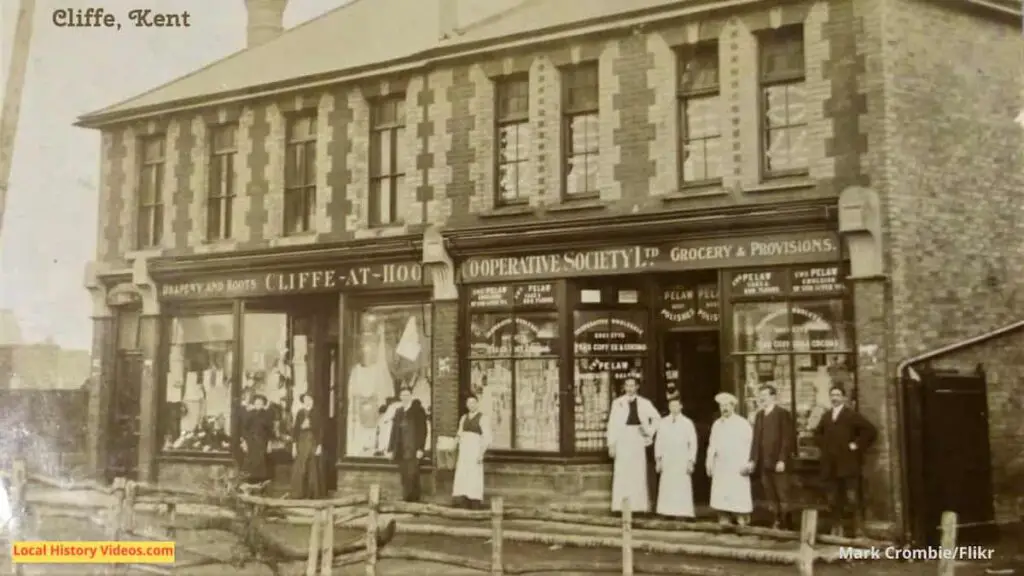
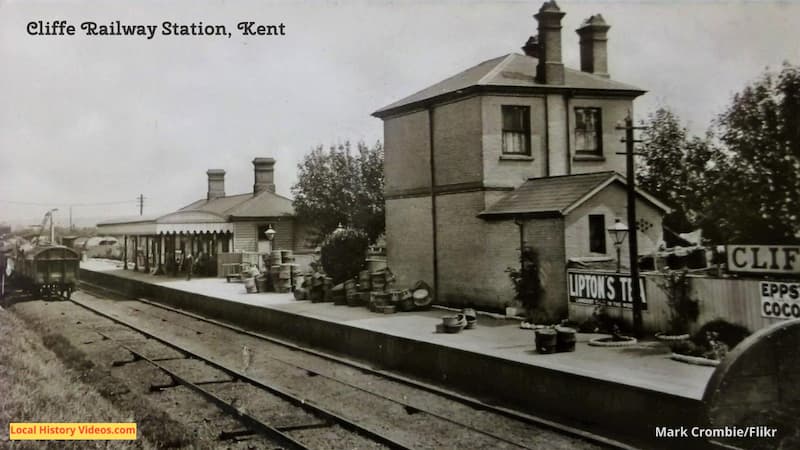
On November 11, 1944, at about 3.40pm, a V2 rocket fell on Cliffe Woods, destroying the trees in a radius of 55ft. Luckily, the device did not cause any loss of life.
Historic Book
Extract from
“The Traveller’s Guide; Or, English Itinerary – Containing Accurate and Original Descriptions of All the Counties, Cities, Towns, Villages, Hamlets, &c. and Their Exact Distances from London; Together, with the Cathedrals, Churches, Hospitals, Gentlemen’s Seats (with the Names of Their Present Posessors), Manufactures, Harbours, Bays, Rivers, Canals, Bridges, Lakes, Salt and Medicinal Springs, Vales, Hills, Mountains, Mines, Castles, Curiosities, Market Days, Fairs, Inns for Post Horses, &c.; the Whole Comprising a Complete Topography of England and Wales; to which are Prefixed, General Observations on Great-Britain; Including a Correct Itinerary from London to the Several Watering and Sea-bathing Places, Lists of Inns in London; Mail Coaches; Wharfs; Packet-boats; Rates of Porterage; Postage of Letters; and Every Other Useful Information, Equally Calculated for the Man of Business and the Inquisitive Traveller · Volume 1″ by Walley Chamberlain Oulton
Published in 1805
Pages 268-270
CLIFFE , ( Kent ) parish , adjoining Gravesend , which see . It is supposed , by several eminent historians , to have been the cloveshoe , where many councils and provincial synods were held during the Saxon heptarchy . Other writers have , however , imagined that these clerical meetings were assembled at Abingdon , which was anciently cailed Clovesham .
The persons who adopted the former opinion conceived Cloveshoe to have denoted Clove or Clive , near the Hundred of Hoo . At the conquest this place was certainly denominated Bishop’s Clive ; and it is also worthy of attention , that the rectors of Cliffe have had , for time immemorial , some privileges and powers rarely possessed by the incumbents of a country parish .
These two circumstances afford a presumptive proof of the archbishops of Canterbury having , at an early period , resided at Cliffe ; and , if so , it is not unlikely that articles and laws respecting the doctrines and discipline of the church should , at a very early period , have been considered and settled at that place .
The manor of Cliffe , as far back as the reign of Edward the Confessor , belonged to the priory of Christchurch in Canterbury , and the archbishop is now the patron of the living , which is in the deanery of Shoreham , and of course subject to the peculiar jurisdiction of that see .
But it is exempted from the authority of the dean of the arches , who is the commissary of that district , and the rector is only visitable by the archbishop at Cliffe . The rector is , in an old MS . styled the ordinary of this parish ; and he exercises several branches of the ordinary jurisdiction without any special commission , though doubtless , of old , this right was vested in his predecessors by a delegated power from the archbishop .
By himself, or his surrogate, he holds a court every year, soon after Easter, for the swearing-in of the churchwardens, and he grants probates of wills, letters of administration, and licences.
Dr. Rawlinson , in his English Topographer , informs us , that a seal belonging to the ecclesiastical court of Cliffe parish had been found upon Blackheath not long before the publication of his book . The author has inserted , from the original , an exact delineation of the seal , the impression on which is a man’s hand issuing out of a gown sleeve ( probably that of a doctor of laws ) , and holding a long staff with a cross fixed on the top of it . The date of the seal is not mentioned . The seal now used is very ancient ; the device is a bishop , standing in basket – work , with his crosier .The inscription is as follows: S. PECVLIARIS: IVRISDICTIONIS: RECTORIS: DE: CLIFF.
The church is a large and handsome building . It consists of two side – aisles , a nave , and chancel , all lofty and spacious . The root is covered with lead , and the walls are embattled. At the west end is a tower , very visible from some parts of the road , in which is a clock and a ring of 6 bells . The case of an organ is remaining in the church . In the chancel there are remains of good painted glass , and on the roof the arms of Archbishop Arundel . Here are likewise 6 stalls like those in cathedral churches , and the tradition of the place is , that they were formerly filled by a dean and five prebendaries .
There are seats of this kind in many more parochial churches in Kent , as well as in other counties ; and some writers have averred them to be indisputable evidence of there having been in these parishes some college of priests either secular or regular , though such fraternity may not be mentioned by any historians , nor any memorials preserved of founders , or the rules and orders by which they were governed . But , when these or some other concurrent proofs of a fixed community are wanting , is not the conclusion too hastily drawn with respect to the ancient use of stalls in the chancels of country churches , and may not another reason be assigned for the constructing of them ? During
the establishment of popery in England , it is well known that there was scarcely a parish church which , besides the high altar , had at one altar at least , placed in the nave , or in an adjoining chapel , dedicated to some chimericaltutelary saint : and in many parishes there were chapels and chantries erected at a distance from the church . At these private altars the incumbents of the parishes were under no obligation to officiate ; but generally chaplains and chantry priests were appointed for that purpose . They were seldom absolutely independent of the rectors or vicars of the respective churches ; and one article of subordination usually required was the assisting occasionally at the celebration of mass at the high altar , and particularly on chief festivals . The offices were at that time sung or said , not in the nave or body of the church , but in the chancel ; and the ancient seats or stalls , which are still remaining in many chancels , seem to have been the places where the incumbent and all other clergymen connected with the church performed them ; and laymen , skilled in music , might be admitted into the chancel . Mr. Hasted concludes these stalls to have been for the use of the monks of Christchurch , Canterbury , to whom the manor of Cliffe belonged ; and he adds , that such stalls are frequently to be observed in the chancels of churches where the great monasteries had estates , and were always placed for the use of the monks at such times as they came to visit their possessions . In the chancel of Stoke Bruce , in Northamptonshire , there are , according to Mr. Brydges ( History , p . 325 ) , five stalls after the manner of a cathedral ; and on each side of the chancel of Holdenby , in the same county , six stalis like those in a collegiate church ( p . 599. ) But it appears , from that author that the principal manors of these parishes were never in any religious community ; and that the advowsons of the rectories were always in lay hands .
The parish of Cliffe is extensive , and , from the ruins of some buildings situated not far from the street , the town is imagined to have been larger than it is at present . Lambard mentions it to have sustained great damage by a fire which happened in 1520 , nor probably did it ever recover from that disaster . The number of inhabitants are decreasing yearly , and for want of them many houses are decaying very fast .
Near it is Cowling Castle , so named from the parish wherein it is situated . It was built by John Lord Cobham , who , in 1399 , obtained from Richard II a licence for its erection .
There is a tradition , that he , fearing its strength might give some umbrage at court , to obviate it , caused the following lines to be cut on a scroll , with an appendant seal of his arms , in imitation of a deed or charter , and fixed on the casternmost tower of the chief entrance , where it is still visible , engraved on brass :
Knoweth that hath and shall be
That I am made in help of the contre
In knowing of which thing
This is chartre and witnessing .
In this castle resided the pious and intrepid Sir John Oldcastle , who , in the reign of King Henry V. fell a victim to popish cruelty .
In the year 1553 , Sir Thomas Wyat , in his insurrection against Queen Mary , attempted to take this castle . Kilburn says , ” the gate was broke open with his ordnance , but it was so well defend ed by the Lord Cobham , its owner , that Sir Thomas was at length obliged to desist . ”
“The ruins , ” says Harris , ” shew it to have been a very strong place , and the moat round it is very deep . The gate – house is still standing , which is fortified with a port-cluse , or port – cullis , and machicolated ; it hath also such kind of towers for its defence as were used in those days . ” The present remains consist of a handsome gate fronting the south , flanked by two round towers ; on the west are the walls of a square fort , surrounded by a ditch or moat , formerly suppliedwith water from the Thames , but now almost choaked up . This building seems to have heen independent of the gate , which probably led to the mansion , on the site whereof stands a farm-house.

